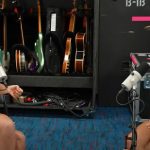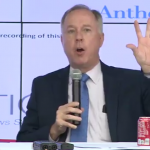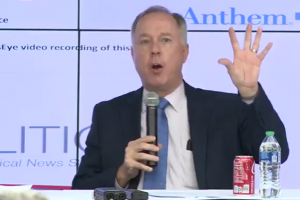According to the Afterschool Alliance, there are nearly 25 million children in the United States who don’t have access to afterschool programs—kids who would be in afterschool programs if they were available—and low-income Black and Latino children are disproportionately likely to be shut out. In 2020, more parents said that afterschool was too expensive, that there weren’t available programs, and that there was no safe way for their kids to get to and from programs than had said those things in 2014. Again, low-income families and low-income families of color were more likely to report those barriers. (The pandemic clearly had an effect here, with the number of kids in afterschool decreasing in 2020.)
Finding afterschool care is something that shapes parents’ lives, and can cause career setbacks for some—usually, of course, women. Vi Nguyen, a Boston-area mother, shifted from a full-time job in medical research to a part-time job in scientific outreach because she couldn’t find adequate afterschool for her 5-year-old.
“I had to do some soul searching,” she told The Boston Globe in September. “Sometimes you want to contribute to society and sometimes family comes first.”
Another Boston-area mother eventually found an afterschool spot for her child, but not until after “a very dark winter for me” during which she considered quitting her job as a nurse practitioner at Boston Children’s Hospital. “It shouldn’t have to be this difficult,” she said.
A New Mexico interior designer and mother of two told the Hechinger Report she had cut her work schedule by 10 hours a week to pick her kids up after school, because putting them both in afterschool would have cost more than she earned during those hours.
This is affecting people’s—again, mostly women’s—ability to hold full-time jobs, and for some families, giving up that income could make paying the rent and buying food impossible. That is, if the afterschool program isn’t already too expensive for low-income families.
As the parent of a grade-school student who is lucky enough (and this should not be luck) to have been able to get an afterschool slot, I’ve white-knuckled whether the school system would give my kid a bus spot from his school to his afterschool program—it eventually happened for us, but I’ve also talked to parents who had to pick their second-grader up from school and walk him to his afterschool every day because the afterschool was 0.9 miles from the school, and busing was only available for distances of more than a mile. I’ve met parents celebrating having gotten two days a week of afterschool in first grade after having been waitlisted through kindergarten.
Funding is a significant problem since afterschool programs require facilities that are acceptable and safe for large numbers of kids. The jobs are mostly part-time and don’t pay super well, which puts the programs in competition with retail and food service businesses for workers. The system, built originally on the presumption of stay-at-home mothers, is not accounting for the fact that parents’ jobs have longer hours than kids’ school days. During the 2020 Democratic presidential primary, now-Vice President Kamala Harris proposed a pilot program involving 500 schools to determine the best way to keep kids in school for longer hours without chaining them to desks for developmentally inappropriate lengths of time, instead looking for “high-quality, culturally relevant, linguistically accessible, developmentally appropriate academic, athletic, or enrichment opportunities for students.”
That’s the kind of thinking that kids and parents and people who work in afterschool programs need. Instead, we’re in a world where modest increases in funding are the good news. Getting funding for tens of thousands of children to get into afterschool programs when there are tens of millions who can’t access those programs is … it’s something, but in the context of a government funding bill that gave more money to the military than to all nondefense programs even if you included $119 billion for veterans in nondefense programs, it’s kind of a travesty.
By the way, nearly 90% of parents support public funding for afterschool, according to an Afterschool Alliance survey, and Republican parents are almost as likely as Democratic parents to say so.










